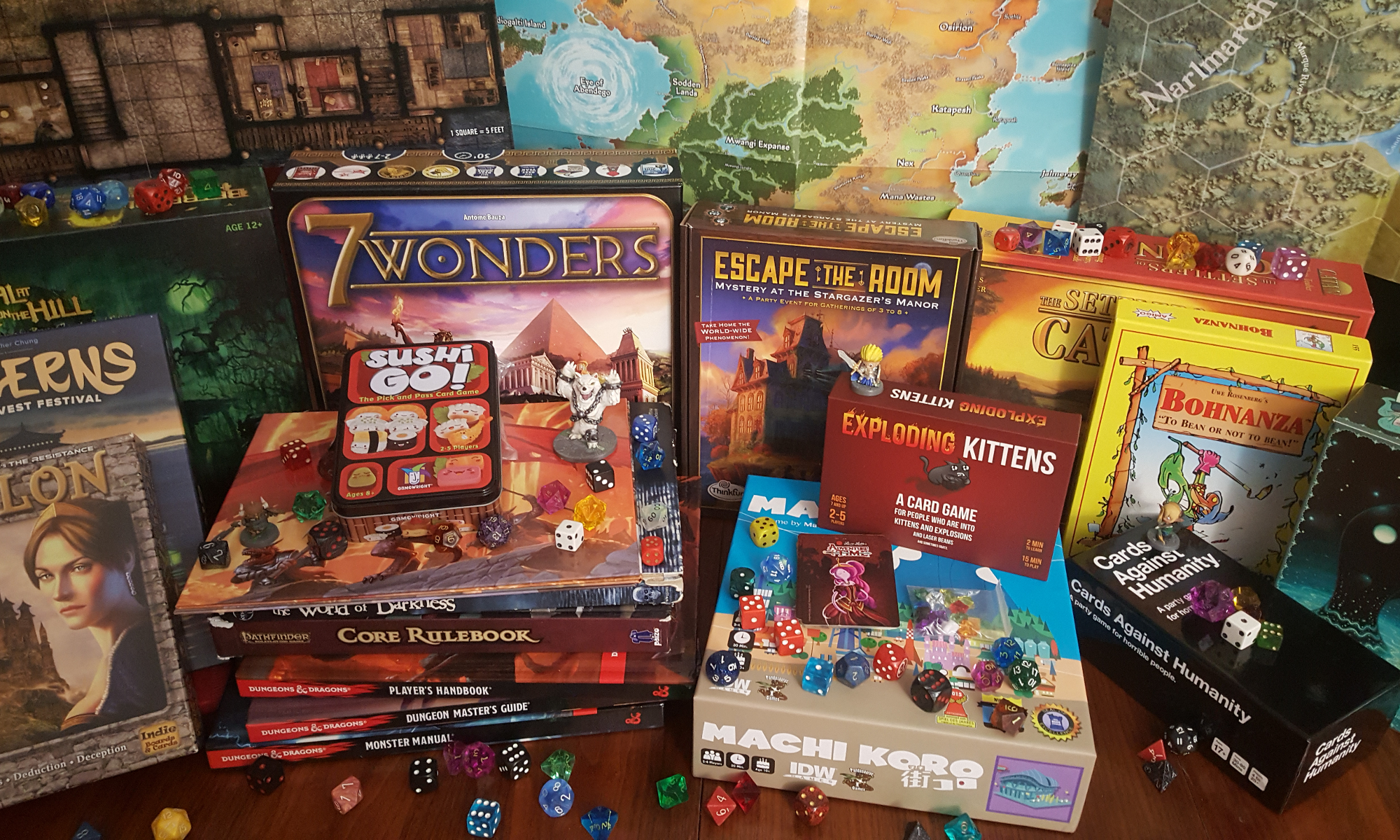Today on Save Vs. Rant, we’re going to talk about Warhammer, the most popular fantasy wargame franchise of all time. Our episode today focuses on the hobby aspect of the game – the world created for the game, the miniatures and other aspects that don’t directly relate to the rules of the game.
I’ve been thinking about orcs lately and their transformation throughout the annals of fantasy media. The first incarnations of fantasy orcs (a term that originally interchangeable, to some extent, with goblin) was J. R. R. Tolkien’s The Lord of the Rings. In that series, they’re the corrupted descendants of elves, twisted through the magic of Sauron. Tolkien created them as an unambiguously “always evil” antagonist that the heroes could slaughter en masse without having to stop and ponder who this man was and what his life had been. He was an orc: his life has been an brutal amoral scramble for the top of the pecking order.
The earliest incarnation of orcs in D&D was, of course, essentially a copy of Tolkien’s orcs, but with a strong reminder that they are tribal or live in villages. Since the primary focus of orcs was being physically powerful (with the drawback of being intellectually and emotionally weak), it was only a matter of time before someone wanted to play a character with orcish ancestry, prompting the introduction of half-orc as a playable race, cementing the fact that not everything orcish is always evil, but that having such ancestry did tend to push one in that direction (possibly because when you are very strong but not very clever, you become accustomed to solving problems with your fists).
A bit thereafter, Games Workshop put their own spin on orcs in Warhammer Fantasy (Hey! That’s what this episode is about!), making them a sort of animal-fungus hybrid that is sorted into castes according to size, solidifying, codifying and modifying the Tolkein link to “goblin.” They also arranged them so their heads jutted distinctly forward in a constant hunch to emphasize their primitive predatory gait and made them distinctly green (prior to that, orcs were more commonly described as brown, gray or black with only periodic references to green skin, usually as a comparison to goblins). They also reverted, more or less, to the always evil version of the orcs.
Warcraft (the PC game) was originally meant to be a Games Workshop licensed Warhammer adaptation, but the plan, for whatever reason (and there seem to be contradictory accounts) proved to be both impractical and unnecessary, with Warcraft seeing a release in 1994 without direct tie-ins to Warhammer Fantasy, further cementing the brutish green-skinned orcs in our collective unconscious (and propelling orcs into popular culture).
Back up a few years to 1987, and orcs (styled as “orks”) are ported into a science fiction setting in Warhammer 40,000. This incarnation of orks retains most of the recognizable features of orcs as a concept (brutality, physical superiority) as well as the Games Workshop specific features (Gork and Mork as their chief deities, jutting forward-facing heads, fungal propagation). In addition, to make them fit into the space setting, the psychic power of the orkish collective unconscious makes their unlikely technology not only work, but also behave as their twisted whims expect (“the red ones go faster,” “the purple ones are sneakier”). The contradictory whimsy, brutishness, playfulness and cunning of the orks gives them a surreal, alien feel that works well in the grimdark setting while also providing unlikely opportunities for comedy relief.
1989 rolls around, and Shadowrun gives its own personal spin to orcs in a modern setting, this time plopping them in a hyper-urban neoliberal cyberpunk dystopia invaded / infested with magic. Wow! Honestly, one of the most original use of the increasingly cliché fantasy monster (and, with this modern spin, the most thorough discarding of the “always evil” trope with its fantasy racism baggage).
Bright, the 2017 Netflix original starring Will Smith sucked, and used orcs as an explicit stand-in for racial minorities in the United States, which is approximately the most lazy thing you can do with orcs. I’m not saying that we don’t need allegories about racism (it’s pretty clear that we STILL don’t get it), but that doesn’t mean that every allegory is useful or that some aren’t ham-fisted clumsy and unentertaining. This one is that last type.
Rolling back to orcs: the primary role that orcs occupied for the majority of fantasy media has been “unambiguous moral evil embodied in primitive sentience,” a role that exists because, for most of us, D&D (and roleplaying in general) serves, periodically if not primarily, as a way of stepping into a world with a simplified spectrum of moral choices. In a world with clear-cut good an evil, you don’t have to worry about who you’re hurting when you wage a war, or who you’re robbing when you assault an orcish stronghold. They are evil – objectively so – and, as such, can be killed without guilt, shame or hesitation (along with a slew of other associated creatures). Likewise, in Warhammer Fantasy, they play the role of (with a few specific named characters acting as exceptions) functionally interchangeable minions that can be thrown in crashing waves against armies who can, in turn, slaughter the primitive fungal beings en masse.
On the flip side, we all want to believe that with sentience comes choice and that, at the end of the day, anything that has the power to reason, think, dream and create art (which all orcs do, albeit in many cases menacing art made from cruel components) has, by extension, the power to make moral choices. Bonus – in most cases orcs DO have this power, they just exercise it so seldom that we can lazily declare them “always evil” without particular regard for these exceptions.
Tolkien expressed regret at making the orcs unambiguously always evil – even within his vision of a world with an epic conflict between good and evil, he recognized that this is not how any sentient creature can be reasonably expected to exist. Furthermore, since we all model things on the societies we see, his vision of orcs as a combination of grim industrialization and ignorant violence creates some recognizable features in the dim orcish reflection that, in turn, perhaps bring us uncomfortably close to imagining groups of humans who were “always evil” in real life.
But roleplaying games are, in a very real way, about setting aside the real world, even when we choose to play in an analog of it. They are a place where we can make bad, dangerous or even evil choices without fear of ruining our very real human lives. They give us the opportunity to interact with worlds of magic, mystery and fantastic beings that exist with psychology and physiology that defies the limitations of our real world and, as such, that we can relate to in ways that we cannot the living, breathing creatures in our own world.
So whatever role orcs play in your campaigns (or video games, or war games, or novels, or films, or whatever media you choose), it can be helpful to know the history of these strange creatures. Perhaps in an upcoming episode we’ll do a more thorough examination of the roles of common fantasy creatures (sentient and otherwise) in the evolution of fantasy media. For now, we’ll simply leave you with the knowledge that it’s vital you know what you and the other players involved want to get out of the inclusion of this quintessential fantasy creature in your games.

